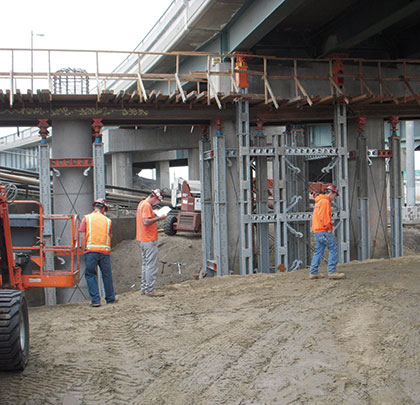Benjamin Franklin was once quoted saying, “In this world nothing can be said to be certain, except death and taxes.” It is obvious that Franklin was not a construction expert; otherwise he would have included project changes in his famous quote. Most projects have changes that impact scope, cost, or schedule—it’s how the changes are managed that determines project success.
An effective change management process includes identification of the change, notification of the change as required under the contract, documentation of the impact of the change, preparation of the change order proposal, and resolution of the change order proposal.
Provided below is a guide for change management best practices that, if consistently followed, can maximize your ability to successfully manage your project through changes.
IDENTIFICATION
Identification of a change is often the hardest part of change management, as some changes may initially be subtle in nature, with the resulting cost increases and delays not apparent until much later in the project. In general terms, a change can be defined as any anticipated or actual deviation from the contract basis, scope of work, cost, or schedule. Easy changes to identify include owner-directed additional work. However, more subtle changes can include:
- Construction means and methods (e.g., requiring hand excavation when the plan was to use heavy machinery)
- Late and defective material supply
- Late and insufficient engineering and construction drawings
- Work stoppage or disruption
- Schedule acceleration or delays
- Over-inspection
- Site congestion or trade interference
- Out-of-sequence work
- Regulatory compliance, risk, or health and safety requirements
Many changes occur “down in the trenches” of a project, as opposed to at the upper levels of the project management team. As such, all key project team members should be familiar with the contract scope, estimate basis, and schedule in order to enable them to more quickly identify variances from the contract basis.
NOTIFICATION
Most contracts have change notice provisions that require a contractor to provide notice to the owner of potential changes within a fixed period of time, such as within 7 days of when the change is first identified. Construction disputes often result from a failure to provide timely and written notice of a change. Timely notice enables the owner the opportunity to review the potential impact of a change and perform a cost/benefit analysis before deciding whether to implement the change.
DOCUMENTATION
The next step is to document the change and its impacts, including cost and schedule. Contemporaneous records are critical to proving and demonstrating the impact of a change. To the extent possible or required, at least the following documents should be kept current with each potential change:
- Marked-up drawings or specifications illustrating the change
- Schedules showing the impact of the changed work
- Photographs and videos before and after the change
- Cost records and timesheets, including segregating time and costs spent on the changed work
- Meeting minutes
- Drawing logs showing submittals, client approvals, and relevant correspondence
- Periodic progress reports, summarizing all approved, pending, and rejected change orders, and any issues and concerns resulting thereof.
Furthermore, confirm in writing all relevant oral directives and changes. Confirming letters and correspondence should be professional and cooperative, not accusatorial.
CHANGE ORDER PREPARATION
The change order proposal and estimate should be prepared as soon as possible, keeping in mind any contractual time limits. The estimate should be based on the best available data using the contractual unit rates and mark-ups or other contract requirements, where applicable.
While this paper does not address cost estimating techniques, care should be taken to ensure that the change order proposal includes, as appropriate, all direct costs (i.e., labor, material, equipment, subcontractors, utilities, and other direct costs) and indirect costs (i.e., management and supervision, site overhead, home office overhead, insurance, bonds, overhead, profit, and other indirect costs).
Certain changes and excessive changes can reduce labor productivity, which increases project costs. In the absence of clear contract requirements, the parties can either elect to estimate and include labor productivity impacts in the change order proposal, or they can exclude them. Industry sources relative to labor productivity impacts include the Mechanical Contractors Association of America (MCAA), the Construction Industry Institute (CII), and the Association for the Advancement of Cost Engineering (AACE) International, to name a few. The contractor may wish to consider appropriate reservation of rights language should the parties decide to not include certain costs, such as impacts, in the change order proposal.
RESOLUTION
Parties are encouraged to settle changes as quickly as possible, as the cost of changes made earlier are often less expensive and less disruptive than the same change made later in the project. Changes made earlier typically result in less rework and allow more time for efficient planning and scheduling, hence minimizing project cost.
A properly documented and prepared change order proposal stands a much higher chance of resolution when it is based on contemporaneous data and factual information.
Lastly, be aware of preprinted forms that may contain exculpatory language that may attempt to modify the terms of the contract or change orders by waiving certain rights. Lien waiver forms or payment application forms may contain language noting that there are no outstanding claims as of that date. Care should be taken to carve out pending change orders or other issues that are likely to result in changes from such exculpatory language. ■
About The Author:
Chris Sullivan is a vice president and principal consultant with Interface Consulting International, Inc., based in Houston, Texas. Mr. Sullivan specializes in analyzing and preparing engineering- and construction-related claims and providing litigation support, including consulting expertise and expert testimony, and has testified in various courts and arbitration forums. For more information, call 800.626.0054, email cjsullivan@interface-consulting.com, or visit www.interface-consulting.com.
_________________________________________________________________________
Modern Contractor Solutions, October 2013
Did you enjoy this article?
Subscribe to the FREE Digital Edition of Modern Contractor Solutions magazine.



